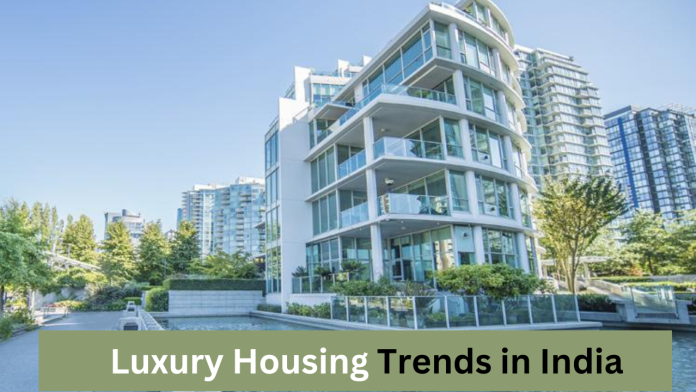The Indian real estate landscape painted an exceptional picture in 2023, setting records with an unprecedented surge in annual sales. Notably, the dynamics of home preferences underwent a significant transformation, with a discernible shift towards higher-end properties gaining momentum.
The Surge in Luxury Living
A November report from a prominent real estate consultancy illuminated this shift, revealing a staggering increase in the acquisition of “luxury” homes. Between January and October, sales of these opulent residences nearly doubled, reaching 9,200 units, in stark contrast to the 4,700 units recorded during the same period in 2022. These luxury homes, priced at or above Rs 4 crore, became the focal point of real estate transactions.
Changing Quarters: Luxury Homes Take the Lead
Further emphasizing this shift, Knight Frank’s report for the July-September quarter disclosed a significant milestone—the sale of “luxury” homes surpassed that of affordable homes for the first time. In this context, “luxury” was defined as properties priced above Rs 1 crore, marking a pivotal moment in India’s real estate dynamics.
The Pricey Affair: A Decadal High
Data released by Anarock added more weight to the trend, indicating that sales of homes priced above Rs 1.5 crore in 2023 witnessed a notable 6% increase compared to the previous year. Despite India ranking as the 14th costliest market globally as of September 30, 2023, according to the Global House Price Index, and grappling with elevated interest rates, the demand for premium residences soared.
2024 Outlook: Sustaining the Momentum
As industry insiders and analysts predict, the demand for upscale homes in India is poised to remain robust throughout 2024. Santhosh Kumar, vice chairman at Anarock Group, asserts that the present trends in residential real estate indicate a sustained appetite for luxury homes in the coming year. Notably, certain markets, like Delhi-NCR, have faced a scarcity of new luxury projects from Grade A developers, a gap now being filled by leading developers recognizing the market’s demand.
Investments Speak Louder Than Words
To substantiate the optimistic outlook, major players in the industry have announced substantial investments in luxury housing projects. TARC plans a Rs 1,200 crore investment for a luxury housing project in Central Delhi, Smartworld commits Rs 3,000 crore to a similar venture in Gurugram, and DLF introduces its luxury project DLF Privana South in Gurugram, amassing over Rs 7,200 crore in sales within just three days.
Developer Sentiments
Leading developers echo positivity regarding the sustained demand for luxury homes. Nayan Raheja, promoter of Raheja Developers, affirms that the momentum gathered by luxury and super luxury homes will persist. Amit Modi, director at County Group, predicts a repeat performance in 2024, anticipating a prolonged high-demand period.
Driving Factors
Analysts and developers attribute the surge in demand to evolving customer preferences, pent-up demand, and the growth of the Indian economy. Vivek Rathi, national director of research at Knight Frank India, highlights the momentum in the luxury market, fueled by pent-up demand, a desire for an enhanced lifestyle, and financial capacity arising from increased wealth.
Future Stability and External Factors
While the outlook for 2024 appears promising, the stability of the luxury housing market in the long run hinges on the intensity of new launches. Analysts caution that the potential slowdown in demand could be addressed with increased supply over the next 2-3 years. However, they acknowledge risk factors, such as changes in the business environment, political landscape, and wealth creation, which could bring about drastic changes in the market dynamics.
In conclusion, as we navigate through the evolving tapestry of India’s luxury housing market, the prevailing indicators suggest a continued ascent in 2024, driven by changing preferences, economic growth, and strategic investments.







































